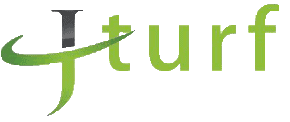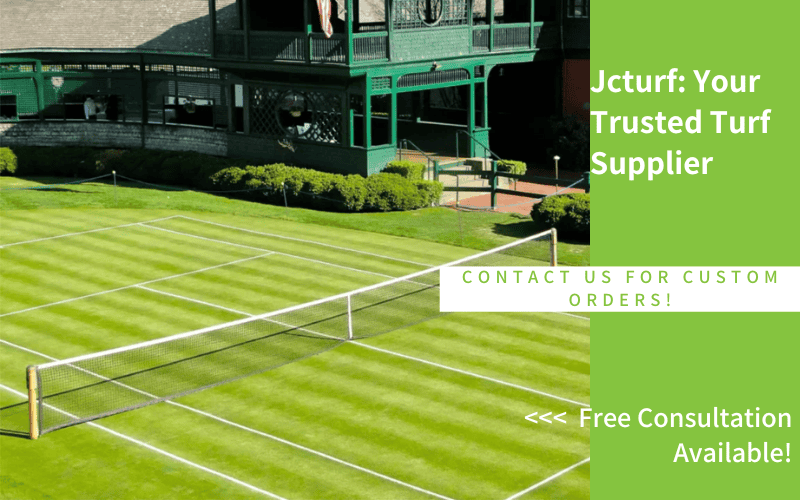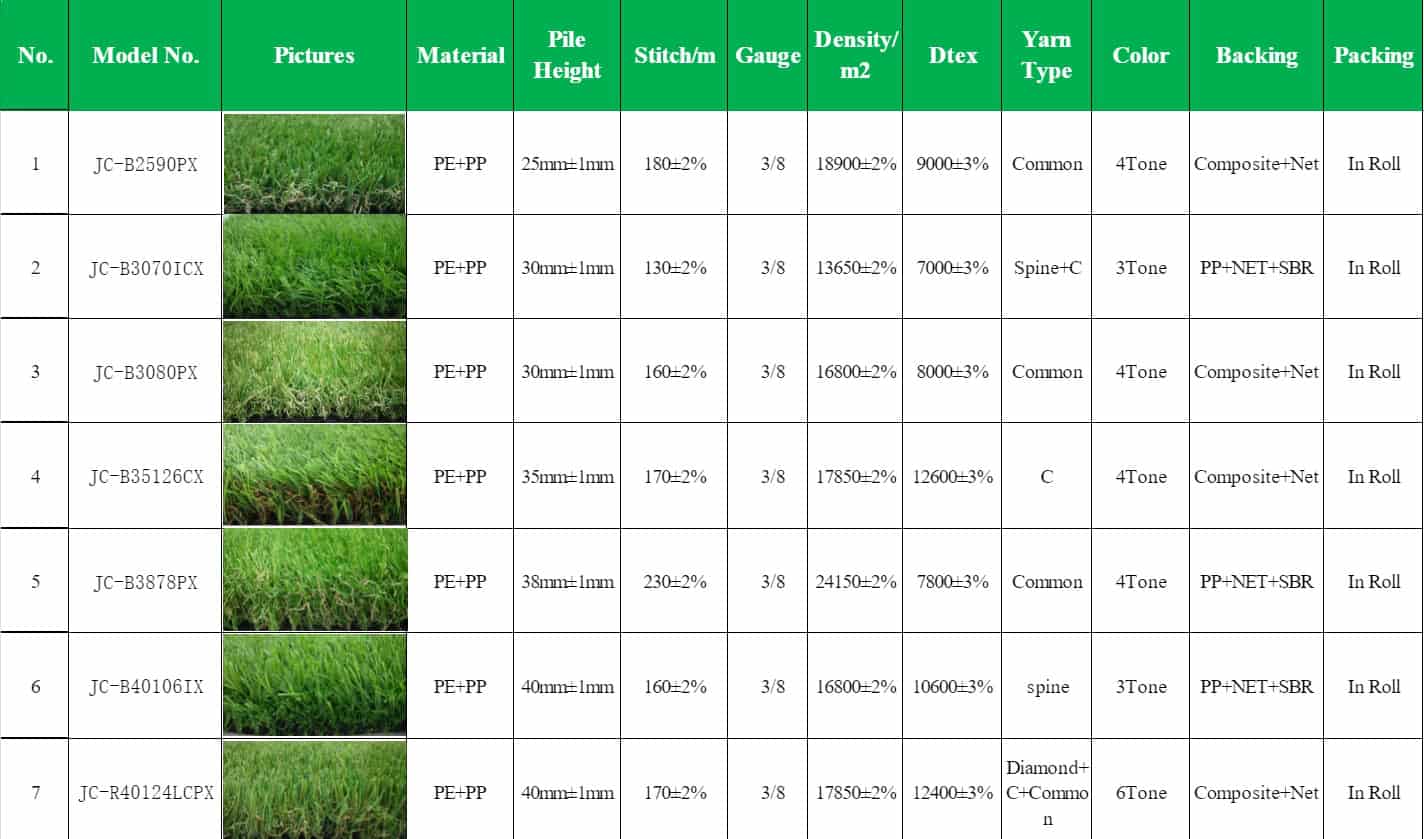In this article, we’ll walk you through everything you need to know about the types of artificial turf, its benefits for tennis courts, installation costs, and how to maintain it. We will additionally delve into the factors that should be taken into account when selecting the most suitable artificial turf for your court. Whether you’re looking to build a new court or upgrade an existing one, this comprehensive guide will help you make the best choice for performance, budget, and long-term value.
Can Tennis be Played on Artificial Grass?
Yes, tennis can be played on artificial grass. Many professional courts use synthetic grass that mimics the feel and bounce of natural grass, offering a consistent playing surface.
Synthetic grass offers the advantage of needing significantly less upkeep compared to natural grass, as it eliminates the need for tasks like mowing or re-seeding, all while ensuring outstanding playability. The performance depends on factors like fiber type (nylon, PE, or PP) and infill material, with high-quality artificial grass ensuring a durable and smooth surface.
Types of Artificial Grass Used for Tennis Courts
Here’s a streamlined overview of the most common types, highlighting their features, advantages, and ideal use cases.
1. Polyethylene Artificial Grass
Polyethylene is a popular choice for tennis courts due to its natural appearance, soft texture, and excellent durability. It provides a comfortable playing surface, reduces the risk of injuries, and mimics the look and feel of real grass. Additionally, it is highly resistant to UV rays and weathering, making it a long-lasting option for outdoor courts.
2. Polypropylene Artificial Grass
Polypropylene is a cost-effective alternative, valued for its softer texture compared to other synthetic materials. However, it lacks the resilience needed for high-intensity or professional-level play, as it can wear down more quickly in high-traffic areas. This makes it a better choice for recreational or low-frequency use courts where budget is a key consideration.
3. Nylon Artificial Grass
Nylon stands out for its exceptional durability, making it suitable for demanding sports surfaces. However, its stiffness makes it less ideal for tennis, as it can negatively impact ball bounce and player comfort. While it excels in durability, its rigid nature often makes it a secondary choice for tennis courts.
4. Sand-Filled Artificial Grass
Sand-filled artificial grass is the most widely used type for tennis courts. It consists of synthetic fibers, such as polyethylene or polypropylene, with sand infill that provides stability and support. The sand is brushed into the fibers, creating a firm and even surface that mimics the feel of natural grass.
- Pile Height: Ranging from short to medium in length (15 – 20 mm), it provides a rapid playing surface where the ball bounces low, closely resembling the characteristics of natural grass courts.
- Playing Speed: Rated as medium-fast to fast by the International Tennis Federation (ITF), making it perfect for quick play and serve-and-volley styles.
Advantages:
- Cost-effective and easy to maintain, making it ideal for recreational and club courts.
- Excellent drainage allows for play soon after rain.
- Requires minimal maintenance, just periodic brushing to redistribute the sand infill.
Best for: Clubs, schools, and residential courts looking for a balance of performance and affordability.
5. Textured Yarn Artificial Grass
Textured yarn artificial grass uses crimped or specially textured yarn to alter the surface’s playing characteristics. This type is often combined with sand infill and offers a slower playing surface compared to the sand-filled variety.
- Pile Height: Medium (15-18 mm), balancing speed and control.
- Playing Speed: ITF-rated as medium to medium-fast, ideal for players who prefer a slightly slower pace and more control.
- Ball Bounce: Higher bounce, providing a hybrid experience between grass and hard courts.
Best for: Facilities aiming to support multiple playing styles, especially for players who prefer baseline rallies.
6. Premium Monofilament Artificial Grass
This type uses high-quality monofilament fibers for a premium look and feel. It’s designed to closely mimic the appearance and performance of natural grass courts, often with minimal rubber infill.
- Pile Height: Medium (15-20 mm), providing a lush, realistic appearance.
- Playing Speed: Medium-fast to fast, resembling the pace of Wimbledon-style grass courts.
- Ball Bounce: Low and fast, favoring aggressive play styles.
Best for: High-end residential properties, luxury clubs, or indoor training facilities seeking a premium playing experience.
Other Types of Tennis Court Surfaces
Clay: Clay courts offer slower gameplay and are gentle on joints but require regular maintenance to retain their quality.
Hard Courts: Hard courts, made with acrylic coatings over asphalt or concrete, provide consistent ball bounce, medium speed, and low maintenance, though they can be tough on joints.
Grass Courts: Natural grass courts deliver fast-paced gameplay and a softer surface but demand intensive upkeep, including mowing, watering, and reseeding.
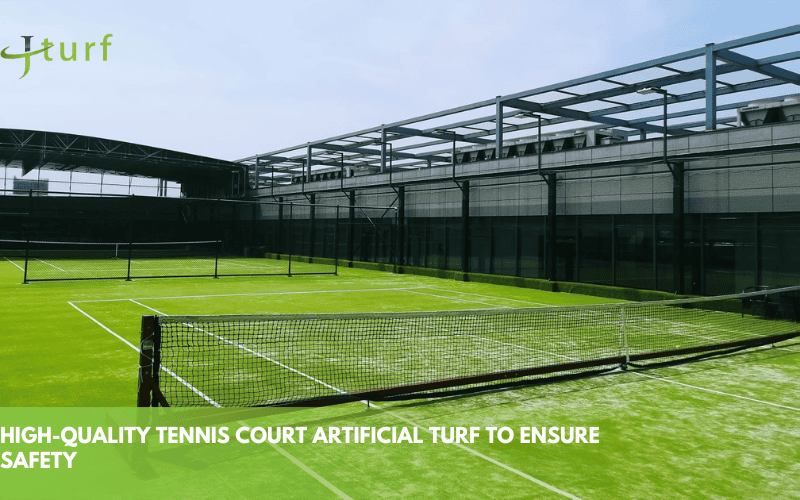
What Are the Benefits of Using Artificial Grass for Tennis Courts?
- Durability: Withstands heavy use and diverse weather conditions.
- Low Maintenance: Minimal watering, mowing, or reseeding compared to natural grass.
- Consistent Play: Uniform surface for predictable ball bounce and speed.
- Versatility: Suitable for various skill levels and multi-sport facilities.
- Environmental Impact: Reduced water usage and chemical treatments.
Installation and Costs of Artificial Grass Tennis Court
Artificial Grass Tennis Court Installation Process
Installing an artificial grass tennis court involves multiple stages to ensure a durable and high-performance surface. Key steps include:
- Base Preparation: Begin by clearing the area of grass, rocks, and debris. Excavating the site, laying a compacted base (crushed stone, gravel, or asphalt), followed by a smooth sub-base (often concrete) for stability and proper drainage. Drainage systems, such as perforated pipes, are integrated for rainwater management.
- Laying the Turf: Rolls of artificial grass (made of synthetic fibers like polyethylene or polypropylene) are cut to size, seamed, and secured to create a flat, wrinkle-free surface. Court markings, either pre-tufted or painted post-installation, are aligned to regulation dimensions (78 ft x 36 ft for doubles).
- Infill Application: Infill materials like silica sand or rubber granules are spread across the turf to enhance stability, cushioning, and play characteristics. Sand is commonly used for tennis courts, ensuring a firm, fast surface. Infill is applied in layers, brushed for even distribution, and maintained at an optimal height (15-20 mm).Once the infill is complete, apply regulation tennis court lines using specialized paint, ensuring accurate measurements.
- Final Touches: Inspect the court for any imperfections, clean off debris, and allow the glue and infill to fully cure and stabilize. Once complete, the court is ready for use.
The full installation procedure usually spans 1 – 2 weeks and necessitates professional skills to align with the International Tennis Federation (ITF) standards.
Artificial Grass Tennis Court Initial Costs vs. Long-Term Savings
The cost of artificial grass tennis court is higher than natural grass but comparable to hard courts, with significant long-term savings:
Initial Costs: Installing a single court costs between $100,000 and $200,000, depending on size, material quality, and location. This includes base preparation, turf and infill materials, and labor. By comparison, natural grass courts may cost $50,000-$100,000 but need frequent reseeding and irrigation, while hard courts range from $80,000-$150,000 with periodic resurfacing.
Long-Term Savings: Artificial grass courts last 8-15 years with minimal maintenance (around $5,000-$10,000 annually). In contrast, natural grass courts require costly annual maintenance ($20,000-$40,000), and hard courts need resurfacing every 5-7 years ($10,000-$20,000). Over 10 years, artificial grass can save 30-50% compared to natural grass and 20-30% compared to hard courts, making it a cost-effective choice for many facilities.
Factors Affecting Cost of Artificial Grass Tennis Court
Key factors influencing the cost of an artificial grass tennis court include:
- Artificial Turf: Turf cost depends on quality, density, and pile height. Higher-quality, durable turf is more expensive, with material costs varying by manufacturer and composition.
- Site Preparation: Costs increase with extensive grading, leveling, or excavation. Removing or relocating existing structures also adds to the budget.
- Drainage System: Proper drainage is crucial. Costs depend on design complexity and materials. Areas with heavy rainfall or poor drainage need more extensive systems, increasing expenses.
- Infill Material: The type and quantity of infill, such as sand or rubber, affect costs. Larger courts or specific performance needs may require more infill, raising expenses.
- Additional Features: Lighting and fencing add costs, varying by type and material. Other amenities like seating, landscaping, or scoreboards further increase the budget.
- Location: Labor costs vary by region, with higher costs in expensive areas. Limited material availability can increase transport costs, and local permits or regulations may add to the total.
Other factors, such as site accessibility and additional infrastructure (e.g., lighting or fencing), can further influence costs. Hiring a seasoned installer who holds ITF certification might involve an additional cost, but it guarantees superior-quality outcomes.
How to Maintain Artificial Grass on Tennis Courts?
Maintaining artificial grass on tennis courts is easier than natural grass, but it still requires regular care to keep the court in optimal condition. Here’s a simple guide for upkeep.
Routine Cleaning and Care
- Brush the Surface Regularly: Use a stiff-bristled or mechanical brush to keep the turf fibers upright and prevent them from flattening.
- Check and Add Infill: Over time, infill materials like sand or rubber granules may settle. Periodically check and add more as needed to maintain surface stability.
- Remove Debris: Regularly clear leaves, dirt, and debris with a leaf blower or broom to prevent buildup that can affect drainage and wear down the turf.
- Clean Spills Promptly: Clean stains and spills with warm water and mild detergent. For stubborn stains, use a pressure washer.
- Addressing Moss and Algae: Apply moss and algae killer annually to prevent growth. Treat any moss or algae promptly with appropriate products or pressure washing, taking care not to damage the surface.
Other Maintenance Tips: Avoid dragging or dropping sharp objects on the court to prevent turf damage. Keep reflective surfaces away to avoid potential heat damage from prolonged sunlight. For specialized tasks like deep cleaning or infill management, consider professional maintenance services.
Dealing with Wear and Tear
- Turf Displacement: If the turf shifts, re-secure it with turf adhesive or re-stretch it to prevent further damage.
- Wear Spots: High-traffic areas may show wear. Patch these spots with new turf or add more infill. For more severe wear, replace the affected section.
- Fading: UV exposure can cause fading. Choose UV-resistant turf, and replace sections if fading becomes noticeable.
What Should You Consider When Choosing Artificial Grass for a Tennis Court?
Selecting the right artificial grass for a tennis court is essential for performance and long-term maintenance. Here are the key factors to consider:
1. Playing Speed and Ball Bounce
Fast Playing Surface: For a quicker game, opt for shorter pile grass with sand infill. This provides a low bounce and mimics the feel of natural grass courts, ideal for fast-paced styles like serve-and-volley.
Slower Surface: If you prefer longer rallies, a surface with higher pile and rubber infill can slow down the ball, offering more control and a higher bounce, similar to clay or hard courts.
2. Durability and Longevity
Turf Material: Higher-quality turf (e.g., monofilament fibers) lasts longer and resists UV damage, ensuring consistent performance and appearance.
Weather Resistance: Outdoor-ready turf resists weathering from sun, rain, and wind, maintaining playability year-round.
3. Aesthetics and Comfort
Visual Appeal: Synthetic grass comes in an array of green hues, enabling you to select a shade that complements the visual style of your facility.
Player Comfort: Turf designed with shock-absorption features can help reduce strain on players’ joints, making it a more comfortable option for those who play frequently or for long hours.
Leading Artificial Grass Supplier for Tennis Courts
At JCturf, we specialize in providing top-tier artificial grass for tennis courts. As a leading manufacturer and supplier, we are committed to delivering products that offer durability, low maintenance, and exceptional performance. Whether you’re building a new tennis court or upgrading an existing one, our wide range of artificial turf options ensures the perfect fit for every facility, from recreational clubs to professional arenas.
Our high-quality turf is designed for optimal playability and long-term value, with minimal upkeep compared to traditional grass courts. With JCturf’s artificial grass, you can enjoy consistent bounce, reduced maintenance costs, and a visually appealing surface that stands up to the rigors of heavy use.
Ready to enhance your tennis court? Request a quote from our team to find the best solution for your facility. Let JCturf be your trusted partner in creating world-class tennis courts with quality synthetic turf!
